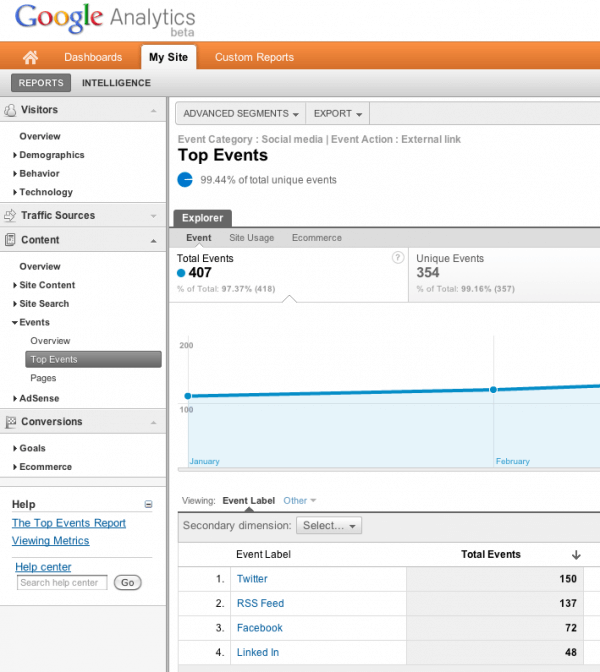Unveiling the Blind Attractions: Recognizing What Google Analytics Goals Can not Gauge
In the world of electronic analytics, Google Analytics stands as a powerful device for monitoring and evaluating on the internet customer communications. Understanding what Google Analytics objectives can not measure is important for gaining an extensive sight of customer behavior and involvement.
User Habits on External Platforms
Comprehending how customers communicate on outside systems is critical for optimizing on-line techniques. Exterior platforms, such as social media sites networks, recommendation internet sites, and on the internet forums, play a significant role in driving web traffic to a business's site. By assessing user actions on these systems, organizations can acquire useful understandings right into the effectiveness of their advertising initiatives and the preferences of their target audience.
One trick element of individual behavior on outside systems is the reference resource. By tracking where the customers are originating from, organizations can identify which platforms are driving one of the most traffic to their site. This information can aid business allot their sources much more successfully, concentrating on the systems that yield the very best outcomes.

Offline Conversions and Interactions
Analyzing user behavior on external platforms provides valuable understandings right into on-line methods; nevertheless, thinking about offline conversions and interactions is equally crucial for a detailed understanding of a business's total efficiency. While Google Analytics excels at tracking on-line communications, it drops short in recording the complete consumer journey that frequently consists of offline touchpoints. Offline conversions, such as in-store acquisitions or phone questions, play a considerable role in many businesses' success. Overlooking these interactions can cause an altered view of the effectiveness of advertising and marketing projects and overall service performance.

Acknowledgment Beyond Last Click
When diving into the world of electronic advertising and marketing analytics, it becomes vital to look past the solitary touchpoint of the last click for a more detailed understanding of attribution. While Google Analytics supplies useful understandings right into customer actions, relying entirely on last-click attribution can be restricting - what data is google analytics goals unable to track. Acknowledgment designs that exceed the last click supply an extra nuanced view of the customer journey, taking into account all the basics touchpoints that result in a conversion
Attribution beyond the last click enables online marketers to appoint debt to different interactions along the conversion path, giving a clearer image of the effectiveness of different advertising networks. By discovering multi-touch acknowledgment versions such as straight, time degeneration, or position-based attribution, organizations can better assign their marketing spending plans and maximize their methods for optimal effect.
Understanding the impact of each touchpoint in the conversion process is essential for making informed decisions and making the most of ROI. By embracing acknowledgment beyond the last click, services can get deeper understandings into consumer habits and customize their advertising initiatives better.
Cross-Device and Cross-Browser Monitoring

Similarly, cross-browser tracking complements cross-device tracking by capturing customer habits as they switch in between various web internet browsers. Understanding just how users interact with sites on numerous web browsers can aid marketers enhance their on-line experiences to make certain consistency and capability across various platforms.
Qualitative Data and Customer Intent
Recognizing customer intent via qualitative information evaluation is crucial for developing targeted electronic marketing strategies that resonate with the demands and choices of the target market. Qualitative information gives understandings right into the 'why' behind individual actions, shedding light on motivations, feelings, and choices that measurable data alone can not catch. By evaluating user feedback, remarks, and communications, marketing experts can reveal useful info about user intent, permitting them to tailor their messaging, content, and offerings to better align with what their audience is seeking.
Qualitative data additionally aids in understanding the context in which customers involve with a web site or app. This contextual understanding enables marketers to develop more appropriate and personalized experiences, inevitably driving greater engagement and conversion prices. By delving right into user intent via qualitative data evaluation, companies can gain a much deeper understanding of their target audience, causing much more reliable marketing approaches that satisfy individuals' assumptions and requirements.
Verdict
Finally, Google Analytics objectives have limitations in determining user actions on external systems, offline conversions, acknowledgment beyond last click, cross-browser and cross-device tracking, and qualitative information related to customer intent. what data is google analytics goals unable to track. It is essential for services to be knowledgeable about these dead spots in order to supplement their information evaluation with other tools and approaches to obtain a more comprehensive understanding of their target market and boost their overall digital advertising methods
By examining individual actions on these platforms, businesses can gain useful understandings into the efficiency of their marketing efforts and the preferences of their target audience.
Assessing customer behavior on exterior systems supplies valuable insights into on the internet strategies; nevertheless, taking into consideration offline conversions and interactions is similarly critical for a comprehensive understanding of a company's overall performance.In digital marketing analytics, moving beyond last-click attribution to explore cross-device and cross-browser anonymous tracking is important for acquiring a holistic understanding of user interactions across numerous systems and tools. By evaluating user feedback, remarks, and communications, marketers can reveal beneficial details concerning individual intent, allowing them to tailor their messaging, web content, and offerings to much better line up with what their audience is seeking.
By delving right into customer intent via qualitative information analysis, companies can acquire a much deeper understanding of their target audience, leading to a lot more efficient marketing strategies that fulfill individuals' needs and assumptions.